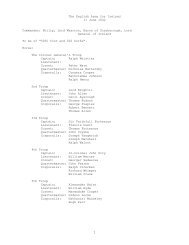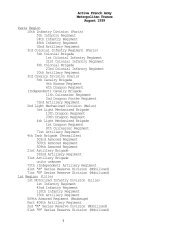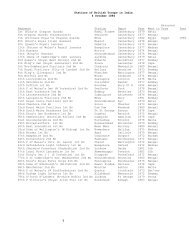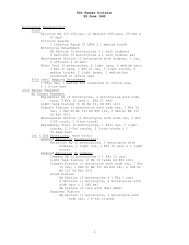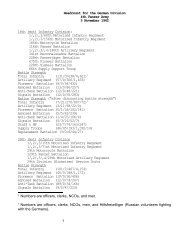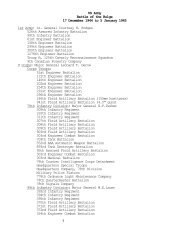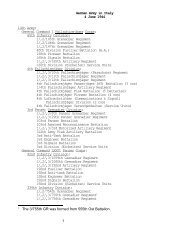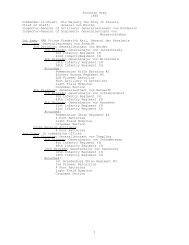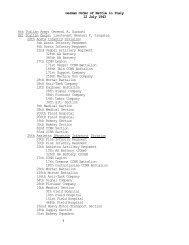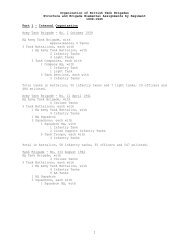Company Officer's Handbook Of The German Army - Command and ...
Company Officer's Handbook Of The German Army - Command and ...
Company Officer's Handbook Of The German Army - Command and ...
Create successful ePaper yourself
Turn your PDF publications into a flip-book with our unique Google optimized e-Paper software.
COMBAT TEAMS 71<br />
regiment, two tank battalions, two light-artillery batteries, two<br />
batteries of 88-mm antiaircraft guns, one engineer company, <strong>and</strong><br />
two antitank com)panies. As in the infantry divisions, the <strong>German</strong>s<br />
do not hesitate to mingle, if necessary, the troops of more than one<br />
division in organizing an infantry-tank team.<br />
Despite differences in composition, most <strong>German</strong> combat teams<br />
have three elements in common: assault, support, <strong>and</strong> holding elements.<br />
However, teams formed for purely defensive missions may<br />
lack the assault element.<br />
When the situation allows adequate time for forming teams, they<br />
are likely to be strong, well-balanced organizations. Teams formed<br />
to meet sudden emergencies are improvised with less discrimination<br />
<strong>and</strong> may lack self-sufficiency; in battle the quality of their performance<br />
may reflect difficulties due to dispersion, attrition, <strong>and</strong> inability<br />
to bring up adequate reinforcements or replacements.<br />
28. COMBAT TEAMS IN SICILY<br />
During the Sicilian Campaign the combat teams of the Hermann<br />
G6ring Panzer Division included troops from the 15th Panzer-<br />
Grenadier Division, the 1st Parachute Division, march battalions, 1<br />
<strong>and</strong> Italian units. Sometimes two combat teams, though retaining<br />
their separate identities, are grouped under a single comm<strong>and</strong>er.<br />
<strong>The</strong> table in figure 58, page 73, shows the organization of the combat<br />
teams of the Hermann Giiring Division on 16 July 1943. <strong>The</strong> changes<br />
that occurred within 5 days are shown in figure 59, page 74, which is<br />
a <strong>German</strong> chart dated 21 July 1943.<br />
<strong>The</strong> <strong>German</strong> method of forming <strong>and</strong> reorganizing these teams is<br />
demonstrated in the following excerpt from an order dated 16 July<br />
1943:<br />
Regrouping. <strong>The</strong> following will be brought up <strong>and</strong> employed as whole battalions:<br />
923d Fortress Battalion to Combat Team Ohring, Oria Panzer-Grenadier Battalion<br />
to Combat Team Hahm, Reggio Battalion to Combat Team Rebholz. Combat. Team<br />
Fihrmann will be dissolved as soon as a second company of Oria Battalion arrives<br />
at Combat Team Hahlm.<br />
1 A march battalion (Marschbataillon) is a temporary organization used for<br />
transferring replacements to a combat zone, but in emergencies the <strong>German</strong>s have<br />
sent march battalions into combat as units.



